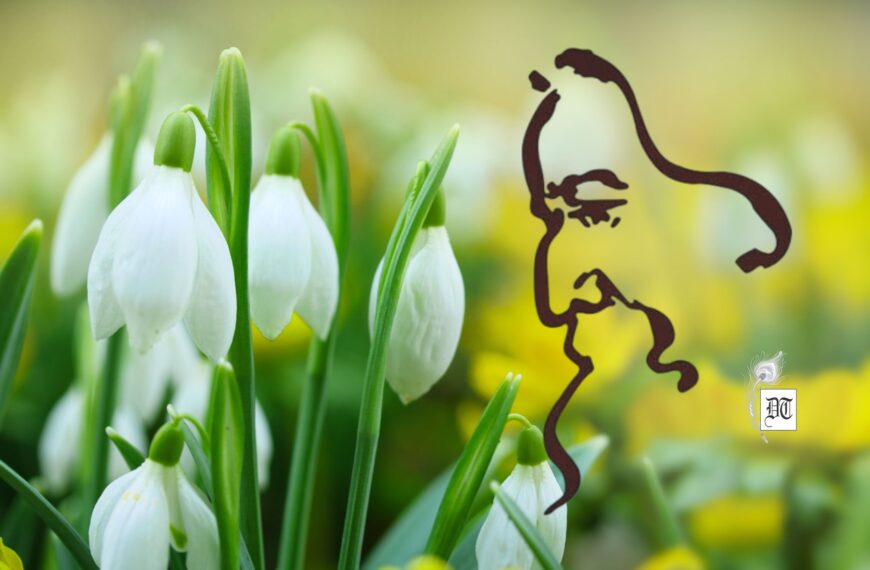Sumita profiles Ceramicist Sardar Gurcharan Singh, a Padma Shri recipient, who pioneered the Delhi Blue Art Pottery, which later became the Delhi Blue Pottery Trust. Read more about the great artist, in the weekly column, exclusively for Different Truths.
In a subcontinent where the traditions of pottery have passed down the generations almost unchanged from the time of the Indus Valley Civilisation, mostly unglazed and mass produced for practical use, Padma Shri Sardar Gurcharan Singh was the pioneer who developed it into an art form.
Sardar Gurcharan Singh was born in Gujranwala, undivided Punjab. As a young teen, he came to Delhi to work for his father’s friend Ram Singh Kabli at the latter’s brick kiln. The mentor noticed the young lad’s interest in ceramics and encouraged him to travel to Japan to study commercial ceramics. Sardar Gurcharan Singh lived and trained in Japan from 1919 to 1921 at the Higher Technical School in Tokyo. He came in touch with eminent ceramists and artists of the period like Bernard Leach, Yanagi Soetsu, and Tomimoto Kenkichi among others.
Bernard Leach is considered the classical master of studio pottery in the UK and credited with introducing and propagating European techniques in Japan and bringing Japanese ceramic traditions to England. Yanagi Soetsu brought about the Folk Art renaissance with his Mingei philosophy, giving new life and value to the local potter and craftsman’s work. Tomimoto Kenkichi is not only considered the greatest artistic innovator of designs on porcelain, he has also been honoured as a Living National Treasure in Japan.
Under the influence of these great ceramicists, Sardar Gurcharan Singh fell in love with the art of ceramics. He gave his first solo exhibition of studio pottery in Tokyo to acclaim. On his return back to India 1922, he continued to work at Delhi Potteries but his interest in Ceramic art continued.
For three years after his return, he was patronised by the Maharaja of Bundi who financed his work and encouraged his research on the perfect clay. In 1927 he founded the All India Fine Arts and Crafts Society (AIFACS). From the late 1930s to 1952 he headed the Government Pottery Institute at Ambala in Jammu. On his retirement in 1952, he moved to Delhi and his old potteries and renamed it the Delhi Blue Art Pottery, which later became the Delhi Blue Pottery Trust in 1991. Since then his special ceramics have decorated landmarks in Delhi and UK. In 1974, Sahitya Kala Parishad awarded him the best artist award, and in 1991, the President of India decorated him with the Padma Shri for his contribution to the field of ceramics. His book, Pottery in India, was published in 1979.
Sardar Gurcharan Singh hand created every piece of his beautiful ceramic art, working through each process himself in the Japanese and Korean traditions. This involved selecting the right mix of stoneware clay, pounding and mixing to right consistency, shaping–on the potter’s wheel, or pressing, moulding and cutting into tiles or jaalis(ceramic filigree), then firing at a low temperature, followed by slip glazing and high temperature firing at 1300 degree centigrade to get the desired gloss. The vibrant Persian Blue colour of the ceramics, from which his pottery derived its name, came from the traditions brought by the Persian invaders who came to India around 1206 and established the Mamluk Dynasty, bringing with them craftsmen trained in Persia. Some of their descendants had settled in Khurja, east of Delhi, and Sardar Gurcharan Singh invited Abdullah and a few other direct descendants of the original immigrants to join his pottery. Since then, his ceramics, enriched with the vivid Persian Blue hues, have made an indelible mark in the rich traditions of Indian Art.
Sardar Gurcharan Singh passed away in 1995, but for decades students have been gathering under the aegis of the Trust, in Delhi and Andretta, to learn Ceramic Art processes, innovate, and continue to enrich Indian Art today.
Citations:
http://www.
http://www.potteryindia.com/
http://www.
http://www.lemongrasshopper.
http://www.andrettapottery.
https://www.youtube.com/watch?
http://www.thehindu.com/2002/
http://www.discoveredindia.
https://en.wikipedia.org/wiki/
https://en.wikipedia.org/wiki/
https://en.wikipedia.org/wiki/
http://www.e-yakimono.net/
https://www.youtube.com/watch?
©Sumita Dutta
Photos sourced from the author
#Pottery #WorldFamousPotter #Art #SardarGurcharanSingh #LivingArt #ArtOfJapan #Ceramics #ArtOfPottery #PottersLife #AsianArt #DifferentTruths



 By
By
 By
By
